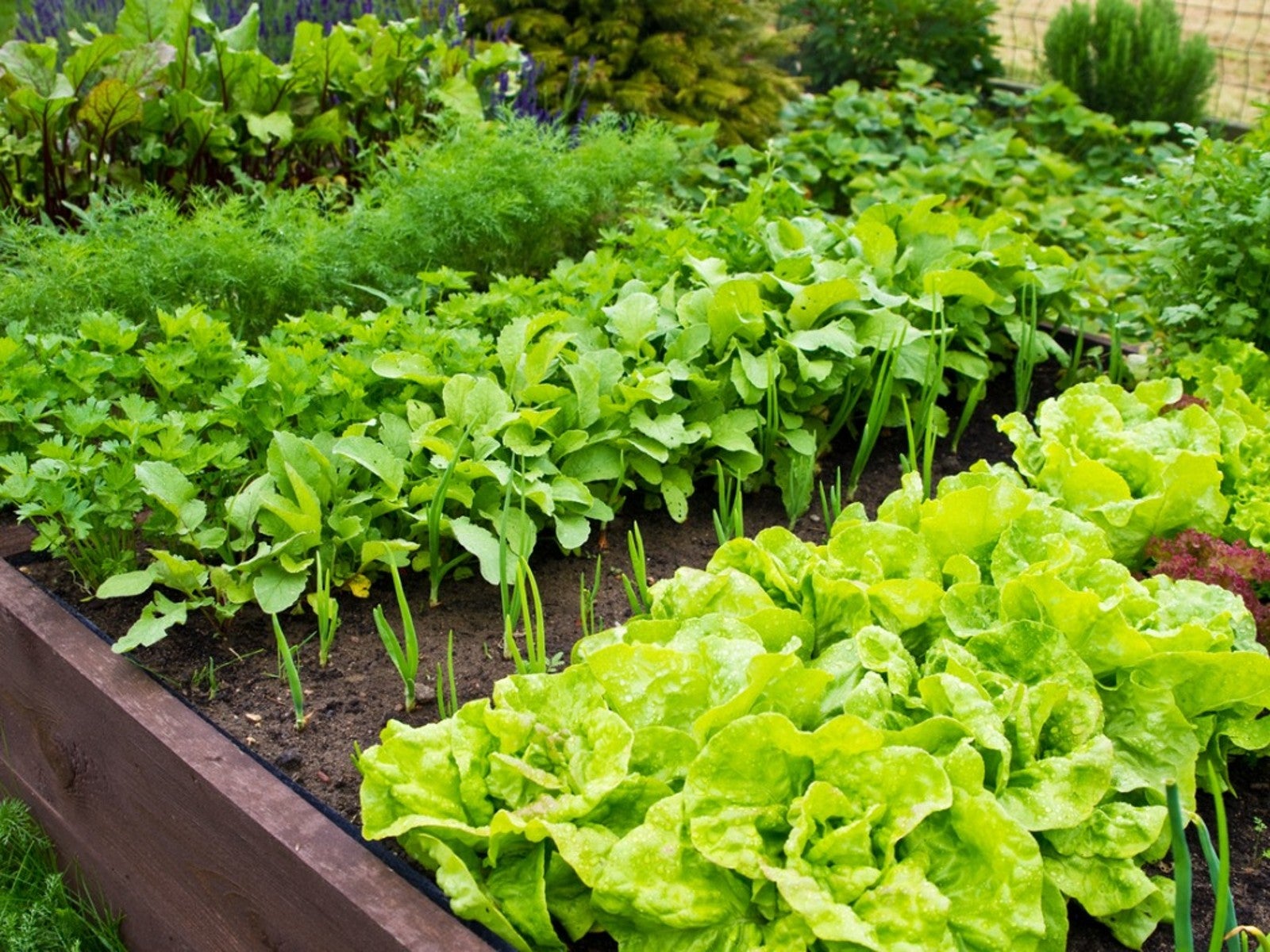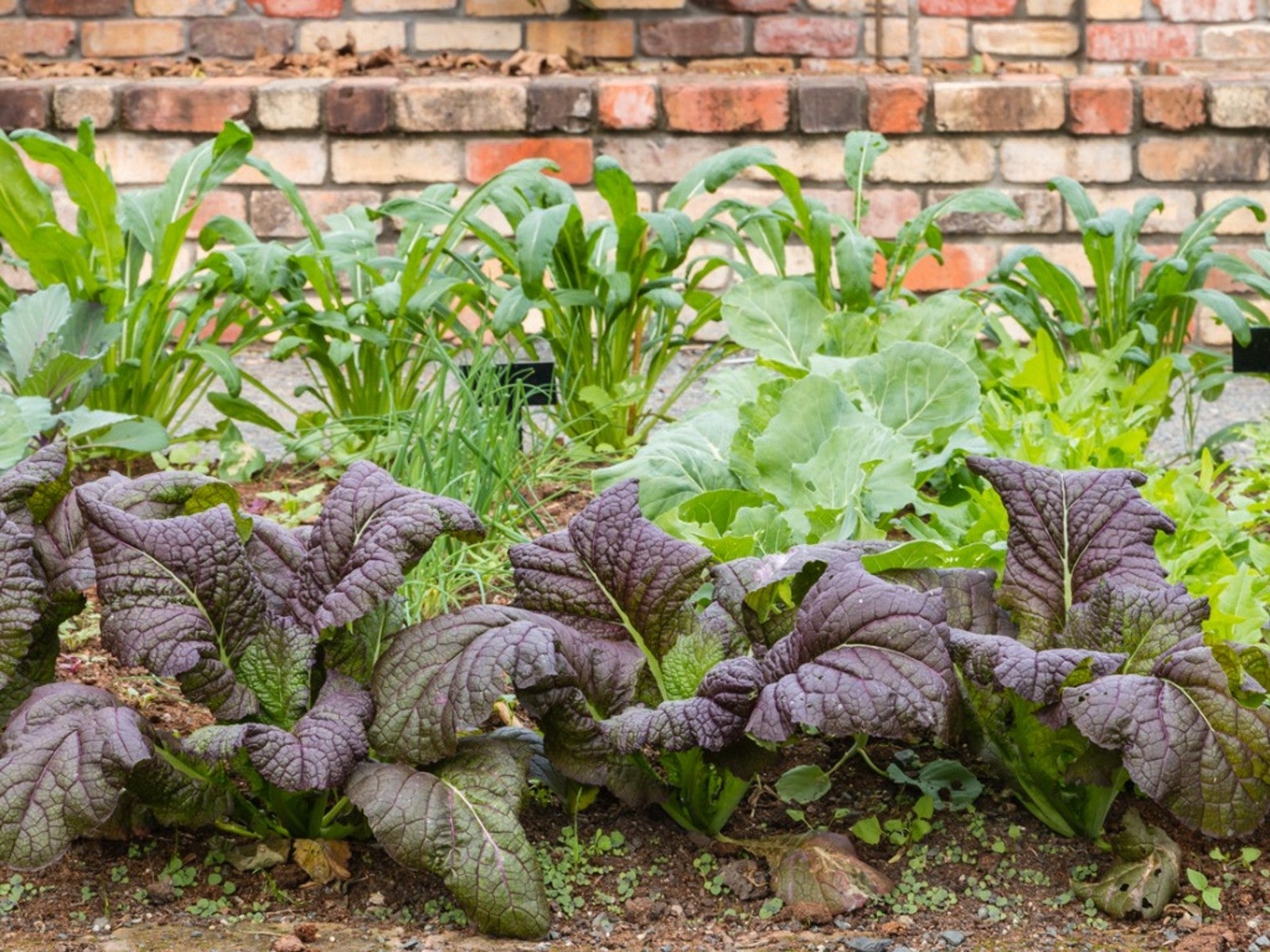Veggie Garden Winter Preparation: How To Prepare Vegetable Garden Beds For Winter

The annual flowers have faded, the last of the peas harvested, and the previously green grass is browning up. It's time to get organized and decide how to prepare vegetable garden beds for winter. With a little veggie garden winter preparation, you'll be setting the groundwork for a bountiful harvest during the next growing season.
How to Prepare Vegetable Garden Beds for Winter
The first order of business when getting the garden ready for winter is sanitation. Remove any spent crop detritus and compost. Break everything down into smaller pieces and mix in shredded leaves to create a balance of nitrogen to speed up decomposition. Do not incorporate any plants that show signs of disease or insect problems, as they will infiltrate the compost pile and cause future problems. Dispose of these in the trash or burn them if allowed to do so in your region. Also, thoroughly weed the garden but don't compost the perennial weeds. They will likely reseed themselves and become the bane of your existence if you use the compost in the garden the successive season. Other items on the list of winter prep for vegetable gardens are to remove any unused stakes, ties, and trellises and allow to air dry before storing. This is also a great time to clean and oil gardening tools.
More on Preparing a Vegetable Garden for Winter
At this time in your veggie garden winter preparation, it's time to think of your soil. You may wish to have the soil tested to see if and what type of amendment would be most beneficial. Depending upon the test results, soil improvement may be needed with the addition of lime, organic matter, or fertilizer. Lime is added to the soil to make it more neutral and is added every other year or third year for heavy soils. For every 100 feet (31 m.), mix in 4 pounds (2 kg.) of lime for sandy soil, 6 pounds (3 kg.) for loamy soil, or 8 pounds (4 kg.) for clay soils and blend into the top 8 to 10 inches (20-25 cm.). Organic matter, such as compost, can be added any time of the year; however, in the fall straw is often added to prevent weeds and retain moisture. Additionally, this is a good time to till in some fresh manure. Fertilizing in the fall is often an exercise in futility since it will likely wash down through the soil and into the groundwater. A better thing to do is to plant a cover crop that will protect the soil and aid in nutrient retention. There are many cover crops or green manure, such as crimson clover, fava beans, field peas, vetch, and legumes. Legumes are great since they add nitrogen to the soil and enrich it when the soil is turned in the spring. Some planting may also occur at this time when getting the garden ready for winter. Garlic, for instance, is always best when planted in the fall. There are other cool crop plants suitable for this season. Lastly, before putting the garden to bed for the winter, take some notes. It's a good idea to keep a record of what crops did well or not. Photos or a sketch of the garden will also keep it fresh in your mind and remind you of successes or defeats. Also write down the soil amendments you have made. Proper sanitation, soil amendment, and the addition of organic matter with the use of green manures will ensure a bumper crop in the following year.
Gardening tips, videos, info and more delivered right to your inbox!
Sign up for the Gardening Know How newsletter today and receive a free copy of our e-book "How to Grow Delicious Tomatoes".

Amy Grant has been gardening for 30 years and writing for 15. A professional chef and caterer, Amy's area of expertise is culinary gardening.
-
 Get Ready For A Summer Of Hummers! Grow These Full Sun Hummingbird Plants and Flowers
Get Ready For A Summer Of Hummers! Grow These Full Sun Hummingbird Plants and FlowersIf you’re lucky enough to enjoy a sunny backyard, make sure you are maxing out on your pollinator opportunities and grow these full sun hummingbird plants and flowers
By Tonya Barnett
-
 12 Lush Alternatives To A Lawn For Sustainable Spaces
12 Lush Alternatives To A Lawn For Sustainable SpacesAlternatives to a lawn are beautiful and also beneficial to your local ecosystem and its pollinators. Explore our top picks for plants to replace grass.
By Tonya Barnett
-
 How Many Vegetables To Plant Per Person For A Year
How Many Vegetables To Plant Per Person For A YearGauging how much to plant in a vegetable garden can eliminate waste while still producing enough for your family. Click for more.
By Bonnie L. Grant
-
 13 Perennial Fruits And Vegetables You Only Have To Plant Once
13 Perennial Fruits And Vegetables You Only Have To Plant OnceLooking to set it and forget it? Find out which fruits and vegetables can be grown as perennials.
By Laura Miller
-
 11 Edible Plants For A Year-Round Garden In A Bucket
11 Edible Plants For A Year-Round Garden In A BucketWant to know how to grow food inside your house and which foods do best indoors? Click here to learn all about it.
By Bonnie L. Grant
-
 Frost Tolerance Of Vegetables From Least To Most Hardy
Frost Tolerance Of Vegetables From Least To Most HardyHow cold can vegetables tolerate? Knowing which veggies will survive frosts and freezes is essential for the success of your garden. Click here for more.
By Laura Miller
-
 Best Vegetables To Pickle Straight From The Garden
Best Vegetables To Pickle Straight From The GardenPickles aren’t limited to just cucumbers. Read on for tips on pickling your fresh veggies.
By Amy Grant
-
 Benefits Of Planting In Fall Vs. Spring Vegetable Plots
Benefits Of Planting In Fall Vs. Spring Vegetable PlotsLearn why some vegetables do better if you plant them in fall instead of spring.
By Laura Miller
-
 Interplanting Vegetables In The Fall Garden
Interplanting Vegetables In The Fall GardenLearn all about the benefits of interplanting vegetables for your fall garden.
By Laura Miller
-
 Best Vegetables For Growing In Perlite
Best Vegetables For Growing In PerlitePerlite is a natural growing medium that comes from super-heated volcanic glass. In some cases, it works better than soil. Read on for more info.
By Laura Miller